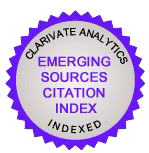Stavrogin’s Crime and Punishment Revisited: Dostoevskian Intertexts in J.M. Coetzee’s Disgrace (1999)
Palabras clave:
intertextuality, confessional dialogue, epiphany, subversionResumen
F.M. Dostoevsky has often been acknowledged as one of the major influences on contemporary South African-born novelist J.M. Coetzee. Nevertheless, his 1999 Booker Prize-winning Disgrace has not been given a reading in consistently Dostoevskian terms. Therefore, the present paper focuses on the implicit intertextual links connecting Disgrace to Devils (1872) and Crime and Punishment (1866). I will argue that Coetzee’s central character, David Lurie is a present-day rewriting of both Dostoevskian Stavrogin and Raskolnikov. As to the first of these, I read Lurie’s engagement with the Romantic figure of Byron as a critique of the Romantic aspects of Stavrogin’s character in Devils. Second, I will argue that while Lurie and his crime largely evoke Stavrogin, his fate is also a ‘corrective’ rewriting of Raskolnikov’s: apart from the obvious thematic similarities, Coetzee’s novel is also clearly reminiscent of both Dostoevskian characters’ respective narratives in its central scenes of confession. Coetzee, however, seems to most ambiguously revise the Dostoevskian motif of ‘rewarding’ both Raskolnikov and Stavrogin with epiphanic visions, just like Stavrogin’s potential liberation from guilt in suicide. Lurie has to live on with the consequences of crimes committed and suffered, turning for most equivocal relief to Romantic art again in the closing scenes of the novel. All in all, the exploration of both intertextual references contributes to an understanding of Disgrace as an ambiguous comment on depriving evil of its Romantic aspects in a continuing polemic with Dostoevsky.Descargas
Descargas
Publicado
Cómo citar
Número
Sección
Licencia
Los autores conservan los derechos de autor sobre sus trabajos y garantizan a la revista el derecho de ser la primera publicación del mismo. Los artículos se publican bajo la licencia Creative Commons Atribución-NoComercial 4.0 Internacional (CC BY-NC-SA 4.0), lo que permite a los lectores y otros investigadores copiar, redistribuir, remezclar, transformar y construir a partir del material, siempre que se respeten las condiciones establecidas.












